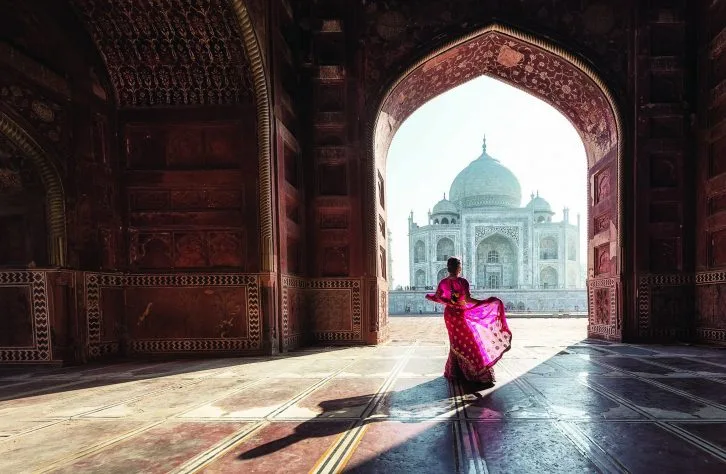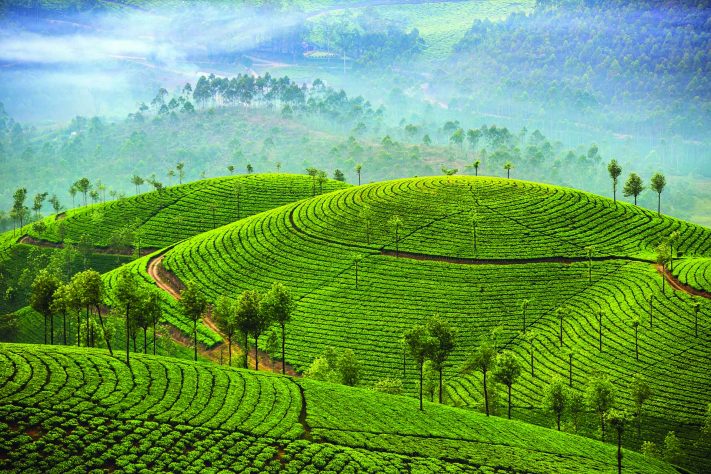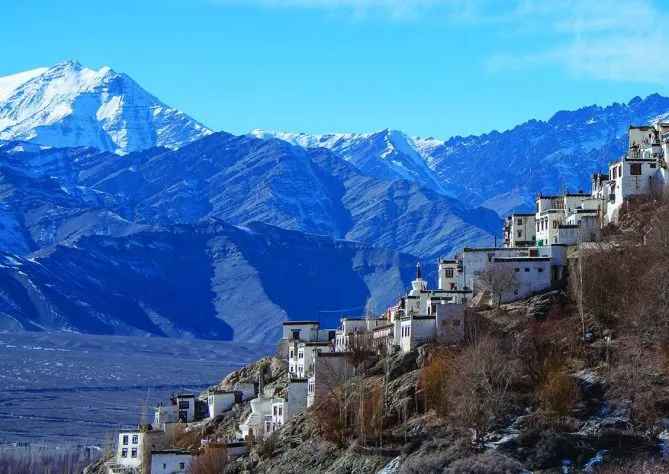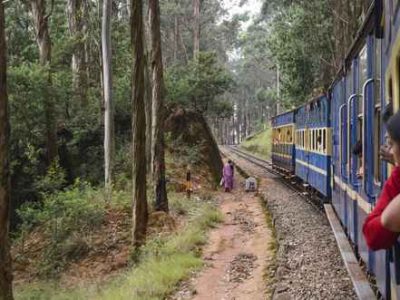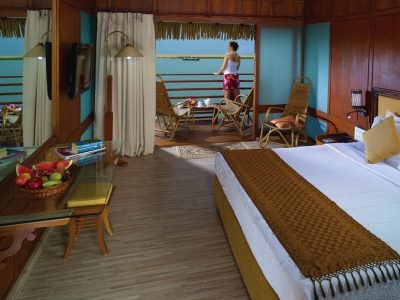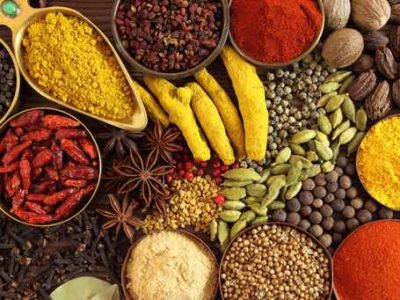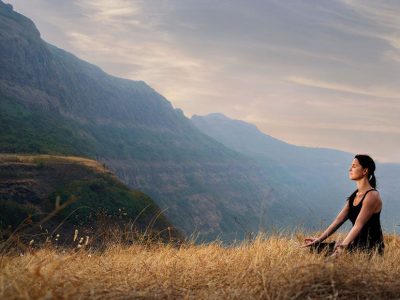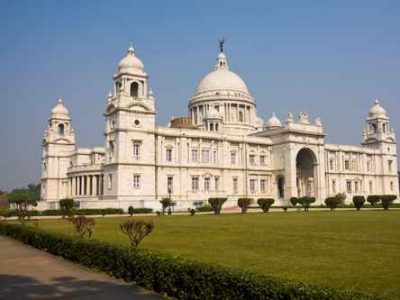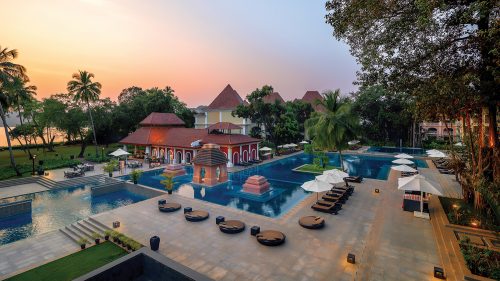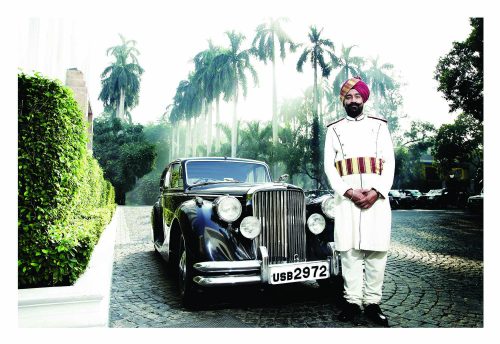Every busy thoroughfare in the cities and towns across India has peddlers and pedestrians jostling for standing room as the traffic streams past uninterrupted.
Ancient buildings dazzle the eye at every turn and everywhere there is evidence of the pastconquerors and colonisers from the Greeks and Persians to the Portuguese, French and British: magnificent monuments, memorials, palaces and forts were their legacy. In addition, the Arabs and the Chinese used India as a trading post for spices and silks long before a sea route from Europe was discovered. India is a land of warmth and hospitality, a bright colourful world of saris, festivals and fairs.
Capital and major centres
New Delhi, in the country’s north, is the capital and major gateway. It is a contemporary, busy metropolis, which combines both the influence of the British Raj with modern development interspersed with ancient monuments, some of which have even been incorporated into a golf course. Also in the north are Agra, Varanasi, Lucknow, Srinagar and Jaipur, Jodhpur, Udaipur, Chandigarh, Amritsar and Shimla. In the west are Mumbai (Bombay), Lonavala, Pune, Bhopal, Khajuraho, Gwalior, Ahmedabad, Vadodara and the coastal regions of Goa and Karnataka. The capital of Karnataka is Bangalore, which is in the south along with Hyderabad, Mysore, Chennai (Madras), Tiruvananthapuram (Trivandrum) and Kochi (Cochin). In the east is Kolkata (Calcutta), Bhubaneswar, Gopalpur on Sea, Port Blair in the Andaman Islands and Darjeeling, famous for its superb tasting teas and the World Heritage Toy Train.
The people
India’s population is in excess of a billion people and its religions are many and varied. Hindu originated with the early Aryans and is not only a religion but also a philosophy and way of life. Jainism and Buddhism were introduced in the 6th century BC and the Islamic teachings were brought to the country by Arab traders in the 7th century. The Afghans and Moghuls who followed were also Muslim, so the religion flourished. Christianity reached India with the arrival of St Thomas, the Apostle, and Zoroastrianism (whose total world population is no more than 140 000) found its way with followers who left their homeland in Iran following the Islamic conquest around 766 AD. Judaism dates back to 973 BC while Sikhism was introduced by Guru Nanak, its founder, in the 15th century. Hindi is the official language, popular in the north while in the south, Tamil, Telugu and Malayalam is spoken with hundreds of dialects between them. English continues to be widely spoken throughout India and helps bridge the many different dialects.
Nature
India is divided from the rest of Asia by mountains and sea. It is bound by the Great Himalayas in the north, stretches southward and at the Tropic of Cancer, and tapers off into the Indian Ocean, between the Bay of Bengal in the east and the Arabian Sea in the west. One-fifth of the land is covered with forests harbouring a variety of wildlife. Rare species like the Asian lion, the white tiger, the one-horned rhinoceros, and the Kashmir stag are protected animals.
The sights
There is so much to see in India. In Old Delhi the river Yamuna runs along the eastern boundary past the cremation sites of Mahatma Gandhi and Prime Ministers Jawaharlal Nehru and Indira and Rajiv Gandhi. The walls of the old city were built by Shah Jahan and are nearly nine kilometres long. The Ajmeri and Delhi gates are part of this old wall, which encloses the Red Fort. About 160 kilometres south of New Delhi is the town of Mathura, once a great Buddhist centre and the legendary scene of Lord Krishna’s playful exploits.
Agra is 200 kilometres from the capital and was the seat of the great Moghul emperor Akbar who built a huge fort there, which contained his palace known as the Jahangiri. His grandson, Shah Jahan, built the incomparable Taj Mahal between 1630 and 1652. Worth a visit is Akbar’s proposed capital of Fatehpur Sikri, abandoned after only a few years, and the tomb of Akbar at Sikandra.
Varanasi, arguably the world’s oldest living city, was once the site of about 100 Hindu temples and 30 Buddhist monasteries. Most did not survive the Muslim occupation, but there is a sacred area called Varamaso, which Hindus hope to visit once in their life. Thousands make the pilgrimage every year to bathe in the Ganges, a sacred river, and visit the holy Viswanath Temple (the domes of which are covered in solid gold) dedicated to Shiva, Lord of the Universe. In the northwest of the country is Rajasthan, with its capital at Jaipur (the Pink City) founded in 1728 by the warrior astronomer Maharaja Jai Singh.
Amritsar is the centre of the Sikh religion and is northwest of New Delhi near the Pakistan border. Chandigarh is a new town designed by the famous French architect Le Corbusier and is the capital of Punjab. North from here is the hill station of Shimla where the former British Government of India migrated every summer. From here it’s a short trip to the twin valleys of Kulu and Kangra, which rival the Valley of Kashmir in beauty. Green with orchards and dotted with ancient Rajput forts on the summit of immense crags, these valleys are truly spectacular. In the southwest is the state of Karnataka, blessed with many natural features including majestic evergreen forests, rivers, caves, and a 320-kilometre coastline dotted with unspoilt beaches.
Where to stay
India offers accommodation in a variety of categories, including deluxe western-style hotels, heritage and palace hotels, travellers’ lodges, tourist bungalows, hostels and homestays.
The main towns have YWCAs and YMCAs. Fully furnished and staffed houseboats are a popular option in coastal areas. The Kettuvallam houseboats of Kerala, that were once used to ship rice and spices, have been reborn into well maintained, fully staffed luxury tourist houseboats, which cruise along the calm, palm fringed-canals of Kerala’s backwaters.
Getting around
City and country tours are offered in India, arranged either by national or state government tourism corporations. The city tours are good value. The rail system is a great way to see the country, and is fairly easy to navigate. Mumbai has the best suburban rail system in India, and Kolkata has a surprisingly efficient, clean underground rail line. Taxis are easy to come by in the main cities, as are buses, which operate on many suburban routes and are very crowded. Scooter taxis or three wheelers are convenient, fast and cheap for getting round the cities. They have meters and the drivers speak some English. Chauffeur driven cars carry up to four passengers and their rates depend on petrol prices. There are also rickshaws, particularly in Kolkata and Tongas and Victoria carriages (horse-drawn vehicles) in several cities. Pedal trishaws still operate, mostly in the smaller towns.
Food and entertainment
Indians are masters at spicing foods and the technique is found in the preparation (grinding and rolling) of the ingredients. Not every dish is a curry, a good deal of food, particularly in the north, is not hot, just richly garnished to provide exciting flavours. Mumbai is famous for its seafood, while Goa has Indo-Portuguese dishes and Chinese food. Tibetan restaurants are plentiful in the hill towns and are very inexpensive. If hot food disagrees with you stick to tandoori-style dishes, which don’t have hot spices, or chicken cooked Muslim-style after being lightly spiced and added to a casserole with dried fruits.
Shopping
Shopping is an experience in itself in India. Be prepared to bargain for the best price in the many bazzaars and emporiums (as a general rule, you can expect to pay almost half the initial asking price if you’re prepared for some serious haggling). There are many wonderful handicrafts from Kashmir’s handloomed rugs, furs, papier-mâché utensils and pashmina shawls, jewels and brassware from Jaipur, and silks from Varanasi and Bangalore. For souvenirs, Delhi’s famed bazaars won’t disappoint, and are teeming with eclectic homewares, clothing, pashmina scarves, and more.
Chandni Chowk Bazaar, located in the heart of old Delhi is comprised of a series of interconnecting crowded walkways littered with stalls hawking everything from books, clothes and shoes to electronics, amidst the pervading smell of Indian foodthe best bazaar to experience the ‘real’ India. For those who wish to return home loaded with quality yet well priced souvenirs, Janpath is a must-visit. Just a short walk away from Connaught Place, Janpath Bazaar has stand alone street stalls, permanent shops and a flea market, selling quality homeware items such as bright and ornate throws, wall hangings, lamps, rugs, embroidered cushion covers, vases, and much more, as well quality clothing and a plethora of trinkets. Also at the Central Cottage Industries Emporium on Janpath Rd and nearby, along Baba Kharak Singh Marg in New Delhi, are various state emporia each run by their state governments.
Activities
Indians all play hockey, cricket, polo, football, volleyball and basketball, and in the hill stations ponies can be hired for excursions to the glaciers’ edge. Ski resorts at Gulmarg in Kashmir and Auli in the state of Uttaranchal are popular for snow skiing and heli skiing, and also some of the Himalayan snowfields to the northeast and near Shimla. The season runs from December to January.
There’s whitewater canoeing on the Ganges’ tributaries and on the Zanskar, Indus, Chenab and Lidder rivers in Kashmir. Ballooning has become popular with a club at Safdarjung Airport in New Delhi. Other activities include camel safaris, trekking and hang gliding in the Himalayas, or exploring woodlands and orchards of the Western Ghats or Aravali hills.
Currency
The Indian rupee is divided into 100 paise. Tipping is appreciated, as wages are low by Western standards.
Climate
There are three major seasons: winter, summer and the monsoon. The winter, from November to March, is pleasant with bright sunny days in the south and east, but in December and January in the north, the temperature drops and there is snow in the hills. In summer, April to June, it is very hot and humid, and many head to the cool hill resorts. The southwest monsoon breaks about early June and continues until September. The south-eastern areas receive rainfall between October and December. Wear cool, light, cotton clothes in the south and northern plains from April to September. Warmer clothes are advisable for the north during winter. In New Delhi an overcoat may be required during December and January.
It is advisable that females dress modestly where possible, even in warmer climes, as showing too much skin is generally frowned upon and may attract unwanted attention. However tourist beachside areas are generally more lax.

